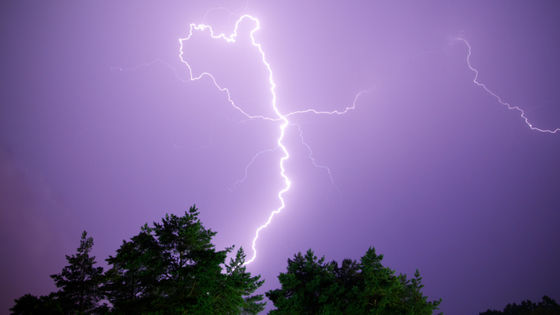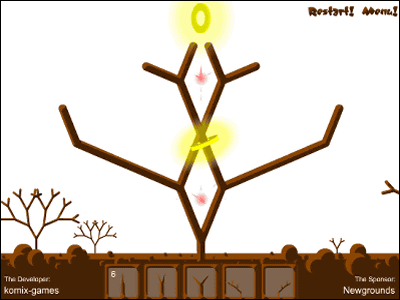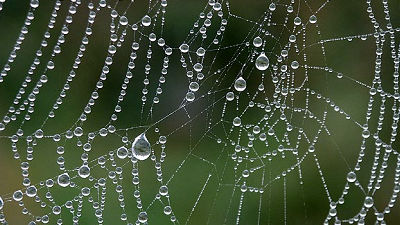Tree discovered with ability to kill surrounding plants with lightning, first tree found to benefit from being struck by lightning

Lightning is a rare but unavoidable threat to trees, and most trees that are unlucky enough to be struck by lightning will burn or fall. However, a study has revealed that a species of 'lightning-resistant plant' inhabits the tropical rainforests of Panama, whose conductive trunks not only protect them from lightning strikes, but also use lightning to clear away vines that have been entangled in their bark, giving them a great advantage in reproduction.
How some tropical trees benefit from being struck by lightning: evidence for Dipteryx oleifera and other large‐statured trees
https://nph.onlinelibrary.wiley.com/doi/epdf/10.1111/nph.70062
Getting hit by lightning is good for some tropical trees
https://www.caryinstitute.org/news-insights/press-release/getting-hit-lightning-good-some-tropical-trees
Shocker: This tropical tree thrives after being struck by lightning | Science | AAAS
https://www.science.org/content/article/shocker-tropical-tree-thrives-after-being-struck-lightning
Tropical tree in Panama has evolved to kill its 'enemies' with lightning | Live Science
https://www.livescience.com/planet-earth/plants/tropical-tree-in-panama-has-evolved-to-kill-its-enemies-with-lightning
While working in Panama in 2015, Evan Gorra, a forest ecologist at the Cary Institute of Ecosystem Studies in the US, found a tree that had survived a lightning strike with little damage.
The tree, a Dipteryx oleifera (D. oleifera) also known as the 'Tonka Bean' or 'almendro,' Spanish for almond, is known for its almond-flavored seeds. The impact blew away the vines that had wrapped around its branches, and the lightning struck the tree with enough force to kill more than a dozen nearby trees. The tree was virtually unscathed.
When asked how he felt at the time of the discovery, Gora recalled, 'I was just amazed that a tree could be struck by lightning and still be unharmed.'

By Evan Gora
After finding that other D. oleifera species thrive after lightning strikes, Gorra and his team used their lightning-location system to study nearly 100 lightning strikes in Panama's Barro Colorado Natural Park, measuring tree survival rates, the condition of the tree's crowns and trunks, the number of parasitic plants and vines, and the mortality of trees near the struck trees.
They then compared the nine D. oleifera trees that had been struck by lightning with 84 other trees, and found that the normal trees had an average of 40% of their branches and leaves destroyed, and 64% had died within two years. However, all nine D. oleifera trees that had been struck by lightning were unharmed except for a small amount of leaves.
D. oleifera not only survived the lightning, but also used the electricity to attack its parasitic plants and nearby rival trees. According to the study, when D. oleifera was struck by lightning, the electricity traveled up the vines and branches and to nearby trees, resulting in a 78% reduction in the number of parasitic vines of D. oleifera and an average of 9.2 nearby trees dying.
Gola and his team also used a drone to create 3D models of the treetops, which showed that D. oleifera trees were on average about 13 feet taller than their neighbors, likely because they were competing for light and space after other tall trees were killed by the lightning.
The disappearance of competitors for sunlight and nutrients gave D. oleifera an advantage in reproduction, with lightning-hit D. oleifera plants able to produce 14 times more seeds than those that were not.
Below are photos of D. oleifera before the lightning strike (left) and two years after the strike (right). You can see that D. oleifera sustained almost no damage from the lightning strike, and that the vines hanging from the tree branches have disappeared after the strike.

By Evan Gora
Gola believes the key to D. oleifera's lightning resistance lies in its physical structure: Previous research has suggested that the inside of the plant is highly conductive, allowing it to dissipate electricity without heating up, just like an insulated wire.
These advantages led the research team to conclude that 'D. oleifera may be specially adapted to attract lightning. ' According to the research team's calculations, D. oleifera's height and unusually large crown make it 68% more likely to be struck by lightning than a typical tree.
This means that D. oleifera trees are likely to be struck by lightning once every 56 years, on average, at least five times over their 1,000-year life span. In fact, in Gora's study, one D. oleifera tree was struck by lightning twice over the course of the five-year study period.
The study was published in the peer-reviewed journal New Phytologist on March 26, 2025. This is the first study to demonstrate that some plants benefit from lightning strikes, but D. oleifera may not be the only tree with a similar ability. 'It seems very likely that certain trees in forests around the world benefit from lightning,' Gola said.
Related Posts:







